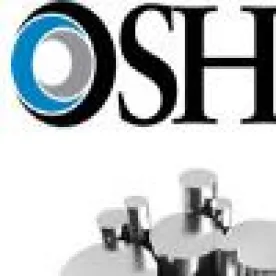Full enforcement with the Occupational Safety and Health Administration’s new respirable crystalline silica rule in the construction industry began on October 23, 2017, according to the agency. The silica rule is one of the most comprehensive health standards ever issued for the construction industry and significantly reduces the Permissible Exposure Limit (PEL) for crystalline silica.
In addition, the rule requires construction employers to implement certain engineering and work practice controls and comply with such other requirements as using medical surveillance, adopting a written exposure control plan, and following certain housekeeping practices.
Permissible Exposure Limit
The new standard sets a PEL of 50 μg/m3 (a significant reduction from the previous PEL of approximately 250 μg/m3) measured as an eight-hour time-weighted average (TWA).
If workers are exposed to crystalline silica above the new PEL, employers must implement engineering controls to reduce exposures to below that level, before using respiratory protection.
Other Requirements
In addition to compliance with the PEL, all construction employers must:
- Establish and implement a written exposure control plan that identifies the tasks that can result in silica exposure, the engineering controls, work practices, and respiratory protection that will be used to protect workers, and the procedures to restrict access to work areas where high exposures may occur.
- Designate a competent person to implement the written exposure control plan by making frequent and regular inspections of job sites, materials, and equipment.
- Prohibit dry sweeping and dry brushing where such activities could contribute to employee exposure to respirable crystalline silica, unless wet sweeping, HEPA-filtered vacuuming, or other methods that minimize the likelihood of exposure are not feasible.
- Offer medical examinations — including chest X-rays and lung function tests — initially (if not received within the last three years by another employer) and every three years for workers who are required by the standard to wear a respirator for at least 30 days a year.
The new standard also restricts the information employers are permitted to receive about an employee’s medical condition. Unless the employer receives written authorization from the employee, the employer may receive only information regarding a medical examination that includes the date of the examination, a statement that the examination complied with the requirements of the standard, and any recommended limitations on the employee’s use of respiratory protection.
Table 1
OSHA offers a unique, alternative approach to compliance with the revised PEL and exposure monitoring requirements for construction employers — commonly referred to as “Table 1.” Construction industry employers are exempt from meeting the PEL and performing exposure monitoring if they comply with the specific engineering controls, work practices, and respirator use outlined in “Table 1” of the new standard.
Table 1 identifies 18 construction tasks that could generate exposures to respirable crystalline silica and, for each task, specifies engineering controls, work practice controls, and respiratory protection to protect workers.
Some of the tools and tasks included on Table 1 are:
- Stationary masonry saws
- Handheld power saws (any blade diameter)
- Handheld power saws for cutting fiber-cement board (with blade diameter of up to 8 inches)
- Handheld and stand-mounted drills (including impact and rotary hammer drills)
- Jackhammers and handheld powered chipping tools
- Handheld grinders for mortar removal (i.e., tuckpointing)
- Handheld grinders for uses other than mortar removal
Training Requirement
Training is another key requirement under the new standard. Construction employers are required to communicate and train employees on the hazards associated with crystalline silica under the Hazard Communication Standard and ensure that each employee has access to labels on containers of crystalline silica and to safety data sheets.
In addition, the employer must ensure that each employee covered by the standard can demonstrate knowledge and understanding of the following:
- The health hazards associated with exposure to respirable crystalline silica;
- Specific tasks in the workplace that could result in exposure to respirable crystalline silica;
- Specific measures the employer has implemented to protect employees from exposure to respirable crystalline silica, including engineering controls, work practices, and respirators to be used;
- The contents of the standard;
- The identity of the competent person designated by the employer; and
- The purpose and a description of the medical surveillance program.
Failure to comply with the new rule can lead to costly citations for construction employers. Jackson Lewis attorneys are available to assist employers with questions, compliance, and any other concerns.




 />i
/>i

